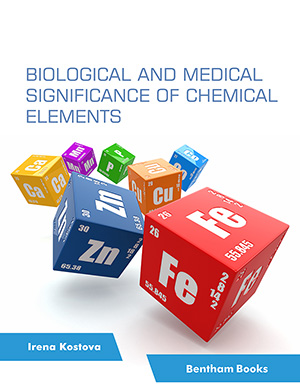Abstract
Aromatic nitro compounds are widely used to synthesize medicine, dyes, spices, and other organic synthesis reagents for their wide sources and low cost. One of the most important uses is the synthesis of phenolic compounds. Moreover, the nitro group on the aromatic ring can be converted to hydroxyl after reduction, diazotization, and hydrolysis, which is a traditional method to get hydroxyl. This mini-review describes the methodologies and mechanisms of nitro- hydroxylation on aromatic rings and other unique transformation methods.
Keywords: Aromatic nitro compounds, phenolic compounds, nucleophilic substitution, diazotization, hydrolysis, hydroxyl group.
[http://dx.doi.org/10.1002/chem.201805631] [PMID: 30548466]
(b) Ranta, J.; Kumpulainen, T.; Lemmetyinen, H.; Efimov, A. Synthesis and characterization of monoisomeric 1,8,15,22-substituted (A3B and A2B2) phthalocyanines and phthalocyanine-fullerene dyads. J. Org. Chem., 2010, 75(15), 5178-5194.
[http://dx.doi.org/10.1021/jo100766h] [PMID: 20593884]
(c) Corma, A.; Concepción, P.; Serna, P. A different reaction pathway for the reduction of aromatic nitro compounds on gold catalysts. Angew. Chem. Int. Ed., 2007, 46(38), 7266-7269.
[http://dx.doi.org/10.1002/anie.200700823] [PMID: 17579907]
(d) Nishiwaki, N. A walk through recent nitro chemistry advances. Molecules, 2020, 25(16), 3680.
[http://dx.doi.org/10.3390/molecules25163680] [PMID: 32806751]
(e) Zhao, L.; Hu, C.; Cong, X.; Deng, G.; Liu, L.L.; Luo, M.; Zeng, X. Cyclic (alkyl)(amino) carbene ligand-promoted nitro deoxygenative hydroboration with chromium catalysis: Scope, mechanism, and applications. J. Am. Chem. Soc., 2021, 143(3), 1618-1629.
[http://dx.doi.org/10.1021/jacs.0c12318] [PMID: 33412858]
(b) Orlandi, M.; Tosi, F.; Bonsignore, M.; Benaglia, M. Metal-free reduction of aromatic and aliphatic nitro compounds to amines: A HSiCl3-mediated reaction of wide general applicability. Org. Lett., 2015, 17(16), 3941-3943.
[http://dx.doi.org/10.1021/acs.orglett.5b01698] [PMID: 26262554]
(c) Chen, D.; Zhou, Y.; Zhou, H.; Zhou, S.; Zhou, Q.; Liu, K.; Zhang, Y. Uozumi, metal-free reduction of nitro aromatics to amines with B2(OH)4/H2O. Synthesis, 2018, 29(13), 1765-1768.
(d) Hosoya, H.; Misal Castro, L.C.; Sultan, I.; Nakajima, Y.; Ohmura, T.; Sato, K.; Tsurugi, H.; Suginome, M.; Mashima, K. 4,4′-bipyridyl-catalyzed reduction of nitroarenes by bis(neopentylglycolato)diboron. Org. Lett., 2019, 21(24), 9812-9817.
[http://dx.doi.org/10.1021/acs.orglett.9b03419] [PMID: 31663767]
(e) Mase, N.; Nishina, Y.; Isomura, S.; Sato, K.; Narumi, T.; Watanabe, N. Fine-bubble-based strategy for the palladiumcatalyzed hydrogenation of nitro groups: Measurement of ultrafine bubbles in organic solvents. Synlett, 2017, 28(16), 2184-2188.
[http://dx.doi.org/10.1055/s-0036-1588869]
(f) Kallitsakis, M.G.; Ioannou, D.I.; Terzidis, M.A.; Kostakis, G.E.; Lykakis, I.N. Selective photoinduced reduction of nitroarenes to n-arylhydroxylamines. Org. Lett., 2020, 22(11), 4339-4343.
[http://dx.doi.org/10.1021/acs.orglett.0c01367] [PMID: 32453579]
[http://dx.doi.org/10.1016/S0927-7757(01)01040-8]
[http://dx.doi.org/10.1021/jo800863m] [PMID: 18656983]
(b) Chen, B.; Dingerdissen, U.; Krauter, G.J.E.; Rotgerink, H.G.J.L.; Möbus, K.; Ostgard, D.J.; Panster, P.; Riermeier, T.H.; Seebald, S.; Tacke, T.; Trauthwein, H. New developments in hydrogenation catalysis particularly in synthesis of fine and intermediate chemicals. Appl. Catal. A, 2005, 280(1), 17-46.
[http://dx.doi.org/10.1016/j.apcata.2004.08.025]
(c) Sharma, S.; Kumar, M.; Kumar, V.; Kumar, N. Metal-free transfer hydrogenation of nitroarenes in water with vasicine: Revelation of organocatalytic facet of an abundant alkaloid. J. Org. Chem., 2014, 79(19), 9433-9439.
[http://dx.doi.org/10.1021/jo5019415] [PMID: 25215900]
(d) Lu, H.; Geng, Z.; Li, J.; Zou, D.; Wu, Y.; Wu, Y. Metal-free reduction of aromatic nitro compounds to aromatic amines with B2pin2 in isopropanol. Org. Lett., 2016, 18(11), 2774-2776.
[http://dx.doi.org/10.1021/acs.orglett.6b01274] [PMID: 27214590]
(e) Lee, N.R.; Bikovtseva, A.A.; Cortes-Clerget, M.; Gallou, F.; Lipshutz, B.H. Carbonyl iron powder: A reagent for nitro group reductions under aqueous micellar catalysis conditions. Org. Lett., 2017, 19(24), 6518-6521.
[http://dx.doi.org/10.1021/acs.orglett.7b03216] [PMID: 29206473]
(f) Kelly, S.M.; Lipshutz, B.H. Chemoselective reductions of nitroaromatics in water at room temperature. Org. Lett., 2014, 16(1), 98-101.
[http://dx.doi.org/10.1021/ol403079x] [PMID: 24341483]
[http://dx.doi.org/10.1016/S1872-2067(06)60010-7]
[http://dx.doi.org/10.1081/SCC-100105379]
[http://dx.doi.org/10.1039/c3ob27366k] [PMID: 23358692]
[http://dx.doi.org/10.1016/j.jlp.2015.09.004]
[http://dx.doi.org/10.1021/jo00432a003]
[http://dx.doi.org/10.1002/hc.21275]
[http://dx.doi.org/10.1080/00397911.2018.1496263]
[http://dx.doi.org/10.1016/j.tet.2017.10.057]
[http://dx.doi.org/10.1021/op5001435]
[http://dx.doi.org/10.1002/mrc.4931] [PMID: 31361050]
[http://dx.doi.org/10.1016/j.bmcl.2010.07.090] [PMID: 20708932]
[http://dx.doi.org/10.1016/S1381-1169(99)00379-9]
[http://dx.doi.org/10.1007/s13361-019-02321-4] [PMID: 31520338]
[http://dx.doi.org/10.1016/j.bmc.2014.06.015] [PMID: 25002231]
[http://dx.doi.org/10.1021/je00055a011]
[http://dx.doi.org/10.1134/S0040579507050375]
[http://dx.doi.org/10.5012/bkcs.2009.30.12.3105]
[http://dx.doi.org/10.1021/jo2007219] [PMID: 21755919]
[http://dx.doi.org/10.5935/0103-5053.20130148]
[http://dx.doi.org/10.1080/00397918908052723]
[http://dx.doi.org/10.1016/j.carres.2006.11.017] [PMID: 17182018]
[http://dx.doi.org/10.1016/j.tetlet.2017.06.082]
[http://dx.doi.org/10.1002/anie.196703071]
[http://dx.doi.org/10.1111/cbdd.12677] [PMID: 26502898]
[http://dx.doi.org/10.1081/SCC-100104465]






























